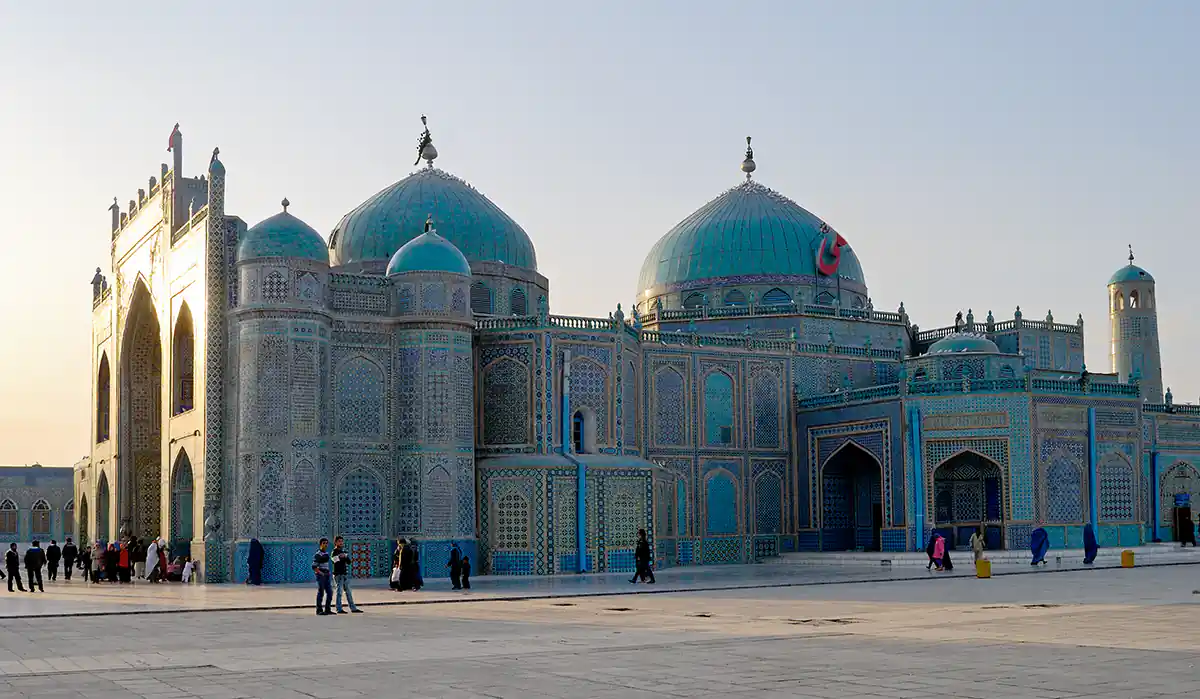Sacred Sites of Afghanistan
Afghanistan: Sacred Sites within a Land of History and Faith
Afghanistan, a country at the crossroads of Central Asia, holds a rich tapestry of history, culture, and religious traditions. Within its complex landscape, marked by both conflict and resilience, lie numerous sacred sites that serve as pilgrimage destinations for the faithful and offer a glimpse into the country's spiritual heritage.
Mazar-i-Sharif: Shrine of Hazrat Ali
Mazar-i-Sharif is a major pilgrimage center, particularly for Shia Muslims. It's believed to contain the tomb of Hazrat Ali, a revered figure in Shia Islam. The city's Blue Mosque (also known as the Shrine of Hazrat Ali) is a stunning example of Islamic architecture and a focal point for pilgrims.
Kabul: Ziyarat-i-Sakhi
In Kabul, the Ziyarat-i-Sakhi (Shrine of the Generous One) holds special meaning for Shia Muslims. It is believed to be a site where Hazrat Ali, the son-in-law of the Prophet Muhammad, once visited and left his mark.
Balkh: Ancient City with Religious Connections
The ancient city of Balkh holds significance within multiple religious traditions. It's associated with Zoroastrianism (rumored birthplace of Zoroaster), Buddhism (once home to monasteries), and later became an important Islamic center. In Balkh Province, the Chishmah-i-Ayyub is a shrine built over a hot spring where Ayyub – Job – is believed to have rested while journeying through Afghanistan.
Faryab Province: Ashab al Kahf
In Faryab Province, near Maymanah, lies the Ashab al Kahf, a site that holds significance in Islamic tradition. It's associated with the story of the Seven Sleepers, young men who sought refuge in a cave to escape religious persecution.
Samangan Province: Chishma-i-Hayat
Samangan Province is home to the Chishma-i-Hayat, a spring considered sacred due to its association with Khwaja Khizr, a figure revered in Islamic mysticism for his connection to water and immortality.
Herat: Musalla Complex and Gazur Gah
Herat, a historic city in Afghanistan, hosts the Musalla Complex, which includes a mosque, minarets, and a mausoleum. Its place in Islamic history and architecture makes it a potent pilgrimage destination. Additionally, Herat is home to the Gazur Gah, a complex dedicated to the mystic Abd Allah Ansari, a revered figure in Sufi Islam.
Kandahar: Cloak of the Prophet Muhammad
The Shrine of the Cloak, located in Kandahar, houses a relic believed to be the cloak worn by the Prophet Muhammad. This makes it an incredibly important pilgrimage site within the Islamic world.
Bamiyan Valley: Empty Buddha Niches
While the iconic Buddha statues were tragically destroyed, the Bamiyan Valley remains an importan historical and spiritual site. The empty niches serve as a powerful reminder of cultural heritage and the enduring connection of people to this landscape.
Other Potential Sites
Afghanistan's complex history and diverse religious landscape suggest the presence of other relevant sacred and pilgrimage sites. These might be tied to local traditions, Sufi shrines, or places associated with historical religious figures.
Note:
Due to the ongoing instability within Afghanistan, the accessibility and safety of pilgrimage to these sites may be impacted. It's always advisable to seek the most up-to-date information before planning any travel within the region.

Martin Gray is a cultural anthropologist, writer and photographer specializing in the study of pilgrimage traditions and sacred sites around the world. During a 40 year period he has visited more than 2000 pilgrimage places in 160 countries. The World Pilgrimage Guide at sacredsites.com is the most comprehensive source of information on this subject.

